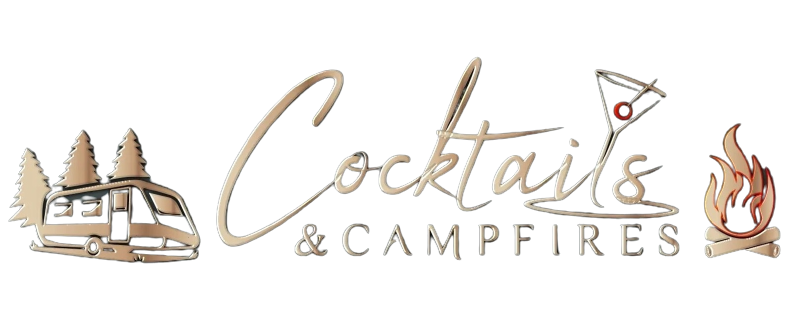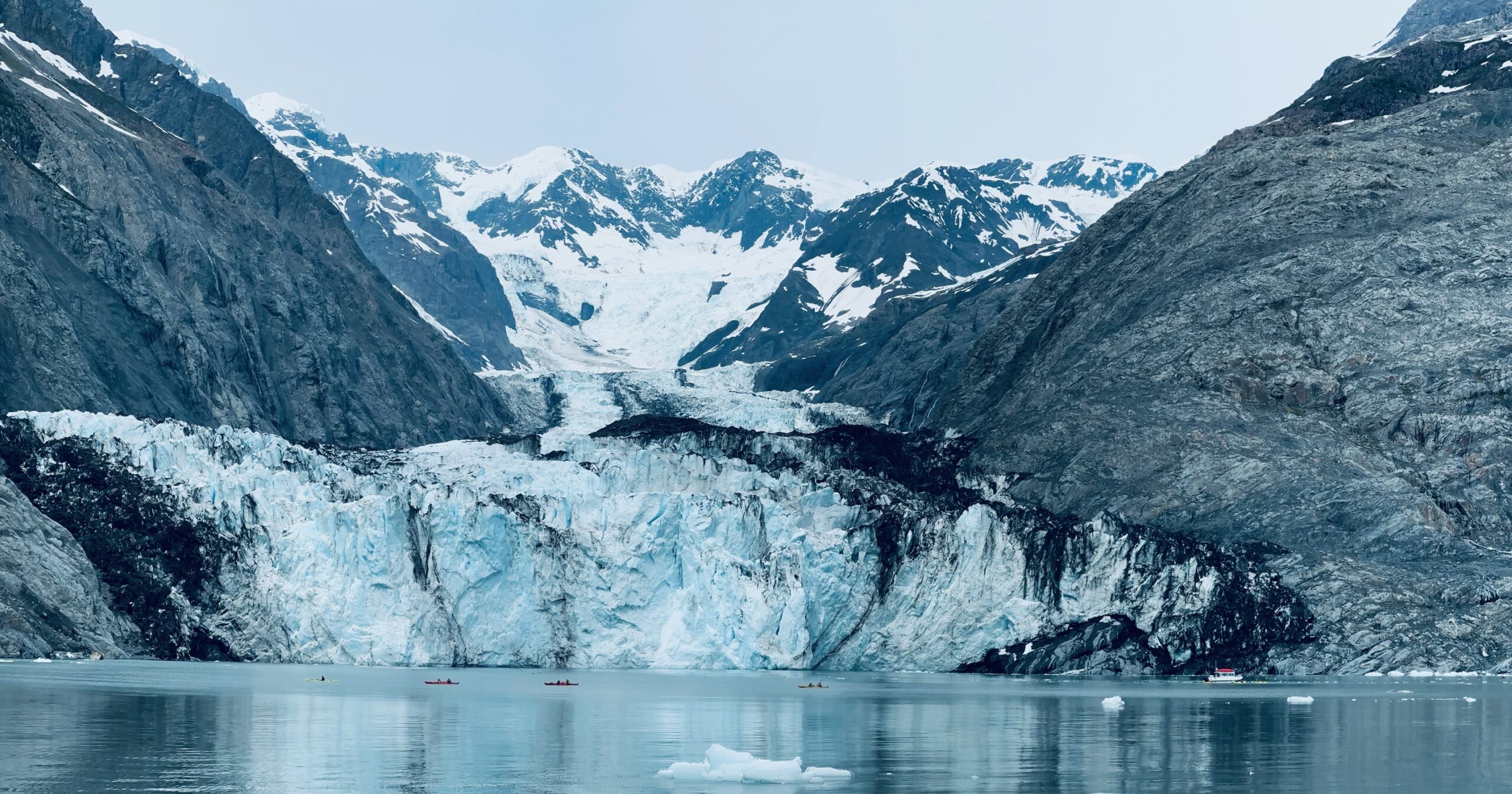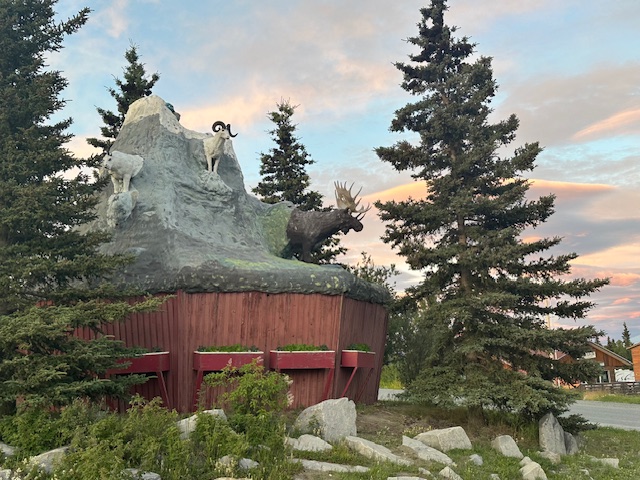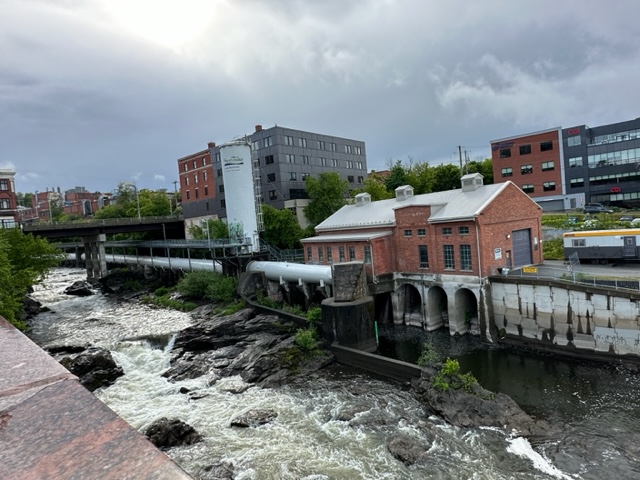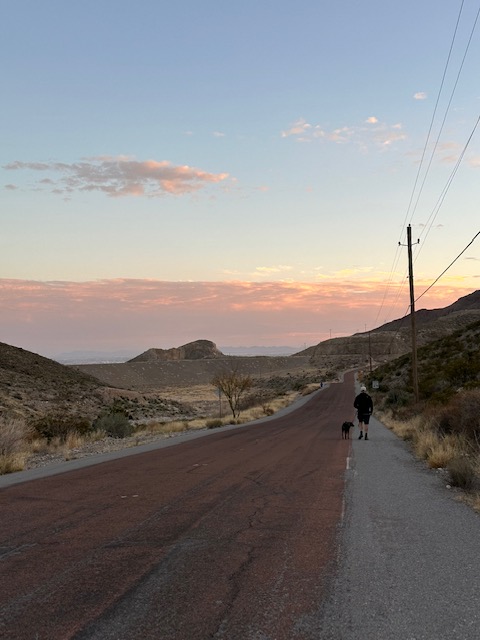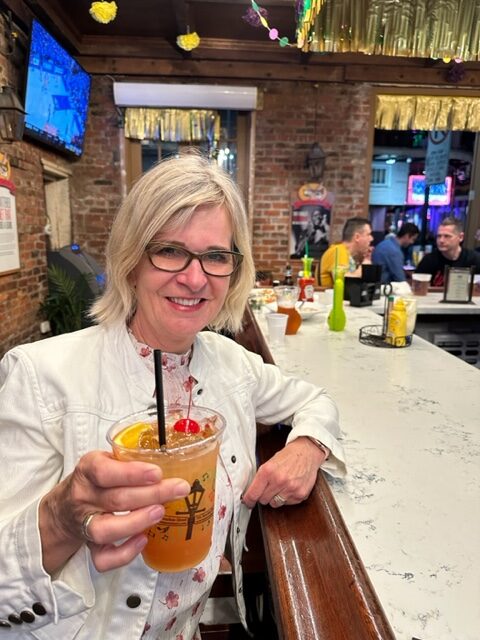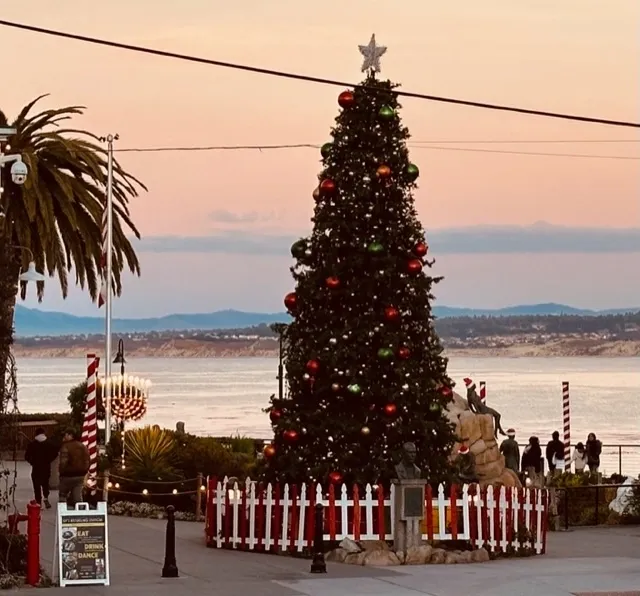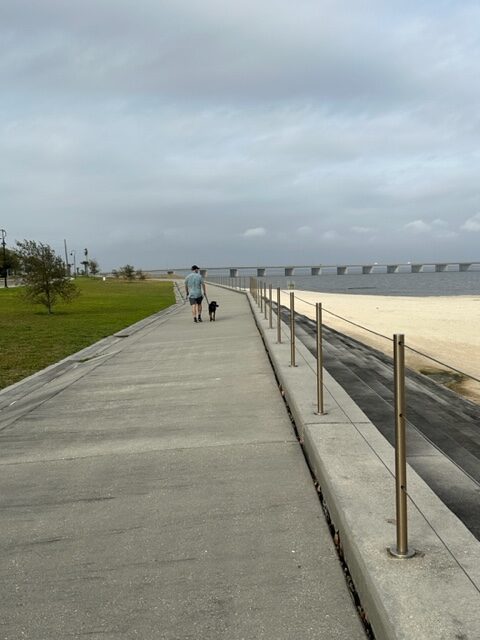Copper Center to Valdez – 19 July 2024
The road from Copper Center to Valdez was incredible, especially the Thompson pass which is a 2,600 foot high gap in the Chugach Mountains. The pass is the snowiest weather station in Alaska, recording 500 inches of snow per year on average. We stopped at the top of the pass with several other cars, to admire the beautiful mountains looking down into the valley and a river. Keen to capture the beauty of the area we walked along the trail down into the valley and up to an outcrop to take some photos.
We finally arrived in Valdez, a beautiful Alaskan coastal city. Valdez sits at the head of a deep fjord in the Prince William Sound, surrounded by glaciers, mountains, and forests with an abundance of land and sea wildlife. It is a very popular tourist spot and stopover for cruise ships with an active harbour, colourful shops and a variety of food trucks.
The town is famous for a number of reasons. It is the terminus of the Trans-Alaska Pipeline. Also they experienced a disastrous oil spill on March 24, 1989 when the oil tanker Exxon Valdez ran aground, spilling 11 million gallons of oil into the Prince William Sound which caused the largest environmental disasters in US history. The spill affected more than 1,300 miles of shoreline, with immense impacts for wildlife, local industries and communities.
In March 1964 (Good Friday) Valdez experienced the second most powerful earthquake ever recorded (9.2 magnitude). The earthquake resulted in a tsunami that destroyed the original city, killing 30 people and resulted in a complete relocation of the town. The story about the earthquake and tsunami made us very aware that we are travelling in areas vulnerable to these disasters. We have agreed our best plan of action is to check out the evacuation points in each city and agree what to do if separated. You never know.
Initially we stayed in the Eagles Rest RV Park as you come into Valdez which was quite a nice campground situated with lovely mountain views. We had shaved a couple of days off our reservation at Tolsona and the Squirrel Creek Recreation centre keen to get away from mosquitos and on to the coast. Thereafter we moved to the Adults only Bear Paw park which to our delight, was situated right by the water. Our site was on the corner with a view across the Sound in the front and the channel that all boats use to come into the harbour on the side. It couldn’t get any better. We enjoyed 6 days in this park and absolutely loved it. There was a short walk from the campground to the harbour with its pretty shops and restaurants. We did find out our last day there that our exact spot was a designated danger area for Tsunamis – just as well we didnt know about it before!
One of the highlights of our stay in Valdez was a Glacier Wildlife boat cruise. As it was over 6 hours long, we took turns – I went on the Sunday and Derek went on the Tuesday. The cruise took us to the incredible Columbia Glacier which descends 10,000 ft from an icefield down the Chugach Mountains into a narrow inlet connected to the Prince William Sound. It has both a Main and West branch. Most glaciers like the Columbia Glacier are rapidly retreating but by comparison the Hubbard Glacier which is also in Alaska is actually expanding over time. Derek took some amazing footage of the glacier and was fortunate to capture the glacier calving – this is when huge chunks of ice break off the glacier with a loud crack and fall away into the water. Beside the Columbia Glacier, we saw Whales, families of Porpoises swimming in the wake of the boat, leaping Salmon, Sea Otters, Sea Lions, Puffins, Mountain Goats, Sea birds etc. The surrounding area was stunning with piercing blue icebergs, waterfalls, and snow capped mountains. This was an experience to always remember.
During our travels we have often woken up by a number of different things – cars, planes, trains, roosters, birds etc. but the one morning it was a loud fog horn which went off at 2 minute intervals from a cruise ship that was anchored in the harbour opposite us, unable to berth due to heavy fog. The cruise ship then proceeded to offload the passengers into life boats and ferry them through the channel next to the RV to the dock. Quite interesting to watch. We have seen quite a few cruise ships come into Valdez since arriving here and also had quite a lot of foggy days.
One of the major tourist attractions in Valdez is the Solomon Gulch Fish Hatchery which is the largest pink salmon hatchery in North America. We had an amazing time there watching enormous Sea Lions frolic in the water while they gorged themselves on swirling shoals of leaping Salmon. The Hatchery remove up to 16,000 eggs a day from Salmon in late summer. Over the winter, the hatchery staff tend to the eggs as they hatch into alevin. In early spring, the fry emerge and are ready to go to sea. The fry are pumped into net pens off shore where they are fed using commercial salmon feeds until they reach a target weight of at least 0.5 grams. From there, the smolts are released to complete their life cycle in the open sea. Approx. 250 million pink salmon fry, and 1.8 million coho salmon smolt are released every year. The adults, which average about 3.5 pounds each, return to the hatchery the following summer, and the process starts all over again.
Our last day in Valdez was rainy and foggy so we decided to explore the Valdez museums. There were 2 museums – one that focused primarily on Old Valdez as it is known – the town before the earthquake and tsunami and the other which was much broader. In the first museum, a miniature town had been created in glassed cases, mimicking the houses and shops (in the old town. There were also several videos that we watched from witnesses of that terrible day and artifacts from that time. In the second museum, which was much larger, we learned how Valdez came about being a town due to opportunities brought about by its position as a port used by prospectors wishing to mine Gold in the Klondike in Canada. It also covered the earthquake and tsunami, but also a lot more information about the Exxon oil spill and the Trans Alaska pipeline. There was also a lot more information about the different tribes that existed at the time, artifacts from their days and a display of different types of canoes used by them. There were interesting items of clothing used in the harsh winters made from Bear gut and Seals. A red mask hung on the wall especially made to to commemorate the Alaskan people who died in the tsunami.
